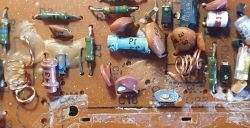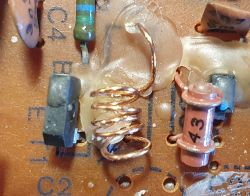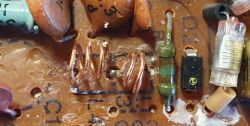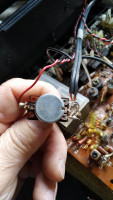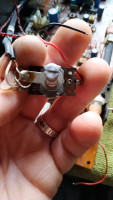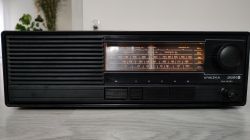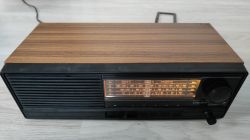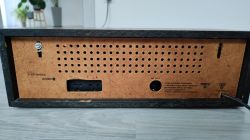My father-in-law brought me an R-207 from the "dump" and the radio was just buzzing. After taking it apart, to my surprise, ours was already here

The radio is tuned and all I had to do was to repair a track that had broken (cracked laminate). However, it is strangely tuned.... I found a schematic, with capacitor values for the tuning, which differs from what is done in my copy. Capacitor C2 replaced with 15pF instead of 18pF, C8 cut out, C14 is 15pF, C17 cut out. It was screwed with "something" of the F1 description, L1 has no case (unless that's how it is originally), fiddled with coils L3 and L4, and coil L2 stretched at the ends. The air capacitor has two plates slightly bent off. The shield which is glued to the case was not connected.
The radio receives very well, but buzzes. I wonder if this is the fault of the electrolytes or maybe due to these cut capacitors.
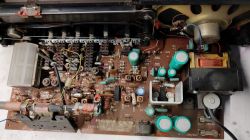




.
I'm going to get down to cleaning the switches, potentiometer, replacing electrolytes (all of them without exception), and all the cosmetics. Should I leave it alone, or experiment with adding capacitors C8 and C17 which are cut out? Unfortunately I don't have any measuring instruments apart from a multimeter and a digital Chinese oscilloscope with a 1kHz generator.






